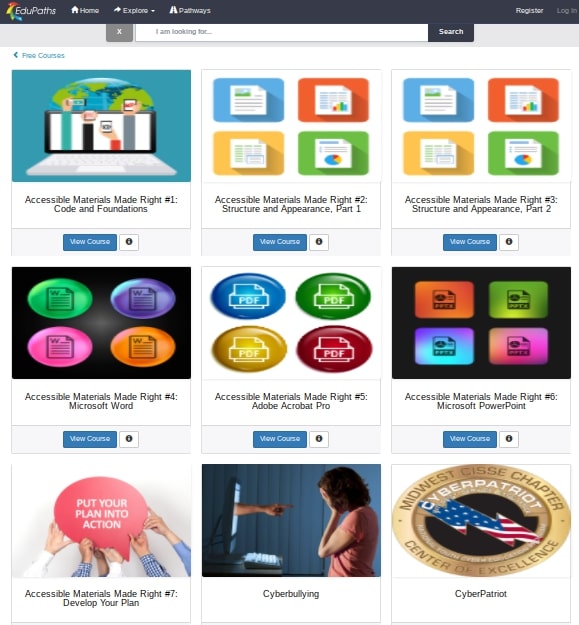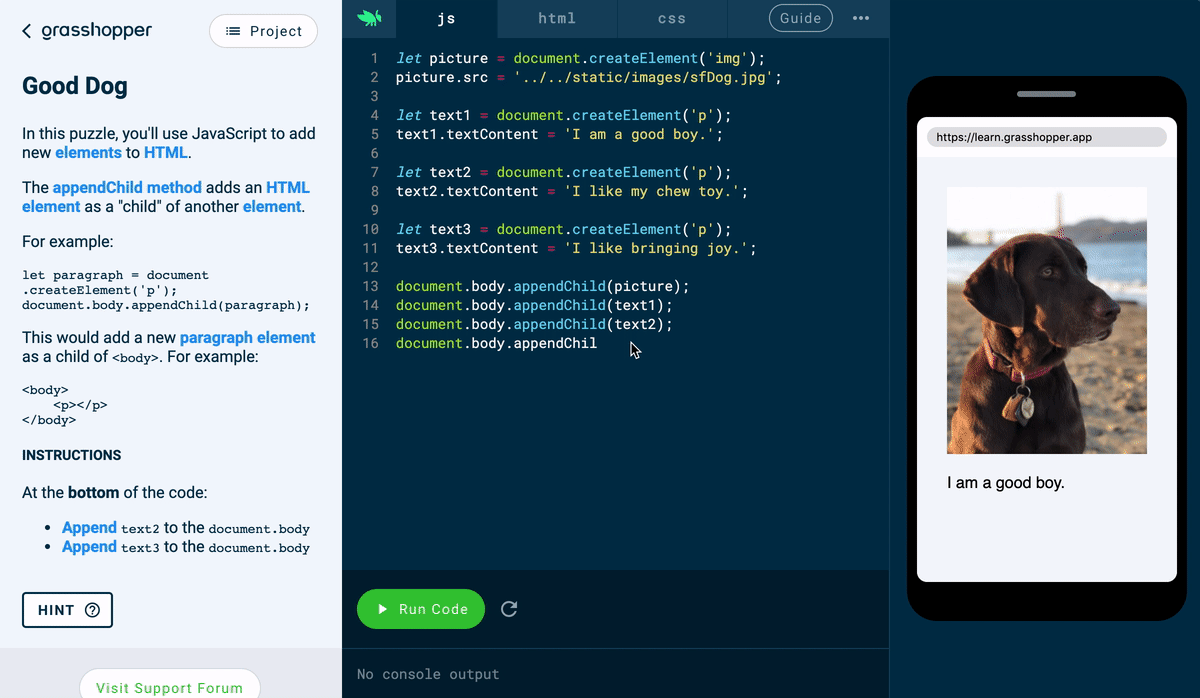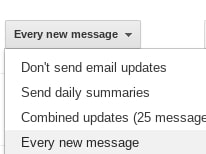Check out REMC’s winter learning opportunities and free virtual courses in this month’s REMC Connect.
Or simply click on either image below for more information and to register.
Check out REMC’s winter learning opportunities and free virtual courses in this month’s REMC Connect.
Or simply click on either image below for more information and to register.
If you browse to ClassroomScreen.com you can find a set of possibly useful widgets that can be displayed.
Currently, there are twelve widgets you can use on ClassroomScreen. You can display multiple widgets at once.
ClassroomScreen’s ExitPoll tool lets you get feedback from students.
You can ask students what they thought about the lesson or check for understanding by asking them a question about the lesson content.
Students simply walk past the interactive whiteboard, tablet, or computer at the end of the lesson and cast their vote.
You can access the ExitPoll tool by going to https://www.classroomscreen.com/exitpoll.html or use the icon at the bottom right of your screen.
Check out EduPaths which now has 300+ FREE Professional Development courses (& FREE SCECHs) for educators.
EduPaths is a FREE professional development portal for ALL Michigan Educators. EduPaths courses are designed to expand understanding on a wide variety of topics and help educators share best practices. Courses are available online and are completely self-paced and intended to help educators personalize their own learning plan anytime and anywhere.
It is FREE to register for an account, and once registered you will be able to access an ever expanding set of FREE courses. Click the link to their November newsletter.
Here’s a snapshot of the courses now available for SCECHs.

[This posting from Dearborn Public is worthwhile and applicable in our district too.] With the holidays fast approaching, a rise in phishing attacks is traditionally seen as well. Phishing attacks can be frustrating to deal with. The best defense is to not fall for them in the first place. Unfortunately, we are seeing phishing attacks become “better” (i.e. harder to detect) and more polished.
Phishing is an attempt to do one of two things
Quite frankly, your credentials are very valuable. For many of our users, district credentials lead to student information, lots of valuable district information and more. Plus, many users “reuse” passwords. So, learning a user name and password on one site can lead to the ability to log into other sites.
We employ several strategies to prevent phishing attempts from ever reaching our users. However, even the best of all of these combined will not be perfect. Occasionally, phishing attempts will land in your inbox.
Spear phishing is targeted at specific individuals. Unlike phishing (which usually blankets a wide variety of users), spear phishing aims to trick high profile targets into giving up their credentials.
It is important to prevent becoming a victim.
[Please note, the P-CCS Tech department will periodically send out training exercises or notes to help staff hone and heighten their skills to avoid falling victim to a phishing campaign.]
You can quickly create new files directly from your browser with “.new” domains for several Google products. For example, you can type “Cal.new” into your browser to create a new Google Calendar event.
The current “.new” domains are:
Note, the above are not case-sensitive (Docs, dOcS and docs will all work) and you can type either the singular (doc, sheet, slide, form, site) or their plural (docs, sheets, slides, forms, sites) before the “dot” new.
Educator and author Larry Ferlazzo shared his 2019 picks of potentially useful Web 2.0 websites that are accessible, free, classroom appropriate and browser-based at his blog. Interested educators may want to consider skimming his posting to learn a bit more about sites such as EduCandy (https://educandy.com/), Fluent Key (https://fluentkey.com/), and FlexClip (https://www.flexclip.com/) as well as consider checking out his 2018 picks and bookmarking his site for revisit.
On October 8th Google announced that their app Grasshopper, created for students to use to learn to code, now can run in a web browser. The app/site has several courses designed to intuitively help someone build coding skills. Each lesson starts with an introduction to some vocabulary before moving into the coding lessons. Each lesson has a tutorial, a practice activity, and a quiz. You have to successfully complete each lesson before progressing to the next one. Grasshopper will save your work in progress.
For more information visit https://grasshopper.app/ and to start coding today on a Chromebook, Mac or Windows PC, browse to https://learn.grasshopper.app/

Last May (2019), all Google EDU account holders around the world that had YouTube Brand accounts were notified by Google that their YouTube Brand accounts would be deleted a couple of months later, in July 2019. While worldwide millions received that notice, in our district it was ~60 staffers and ~2400 students. Google later decided to instead suspend EDU Brand accounts in July and only outright delete them this coming November (2019). For the ~60 P-CCS staff, the Technology department submitted online forms necessary to obtain a temporary one year extension (until July 15, 2020) from suspension / deletion of their Brand accounts. Student brand accounts were not eligible for any extension and were suspended this past July.
One major result of the account suspensions that were not foreseen by Administrators or Google, is that if a user had configured their Brand account to be the default account to use when signing into YouTube, they could not view YouTube videos at all until they changed the default channel by selecting the box under “Settings > Advanced Settings” within YouTube.
If you encounter any students unable to view YouTube, please let them know the following:
Affected student users need to sign-out of Google (or delete their cookies) then navigate to youtube.com/channel_switcher and sign in again, remembering to change the default channel once they sign-in. Once this has been done on one device, it will fix the issue on any of their other devices.
Some students might find it easier/possible, to simply delete their Brand account by browsing to https://myaccount.google.com/brandaccounts and deleting the Brand account. Once deleted, they should be able to again log into YouTube.
For those interested, especially those staffers with Brand accounts and a one year extension, guidance on content retention as well as more background on the situation can be found here.
If you think you might have missed an email sent to a group that you’re a member of, head to groups.google.com, click on My Groups, then find and click on the name of the group and in most instances a page will open listing past email messages to that group.
At Groups, you can also adjust how emails are sent to you for each group for whom you are a member by clicking the down arrow to the right of “Every new message” found on the right hand side of the landing page:

Note, some groups are set to show who are their members; others are not. If set to show, click on “Members” to see a list along with the date they were added/joined the group.
This and more can be explored by visiting groups.google.com.
If you’re wondering how to enable your new ID/door access proximity card to work with many of our copiers instead of having to input a PIN number, please see the directions and a link to a video below.
1. Place the ID/ proximity card in front of the card reader on the copier
2. When asked if you’d like to associate and account with the ID, tap “yes”
3. Input your network credentials (what you’d use to login to a district desktop computer) NOT your Google login information
4. Tap “set”
5. Place the proximity card in front of the card reader again and you should be able to login without the need to input a pin number
If you need visual instructions, here is a 40 second video that shows you how: https://www.wevideo.com/view/1081340782